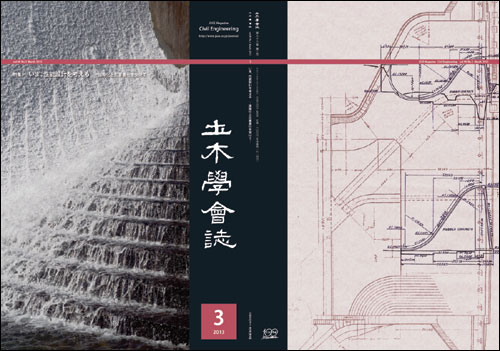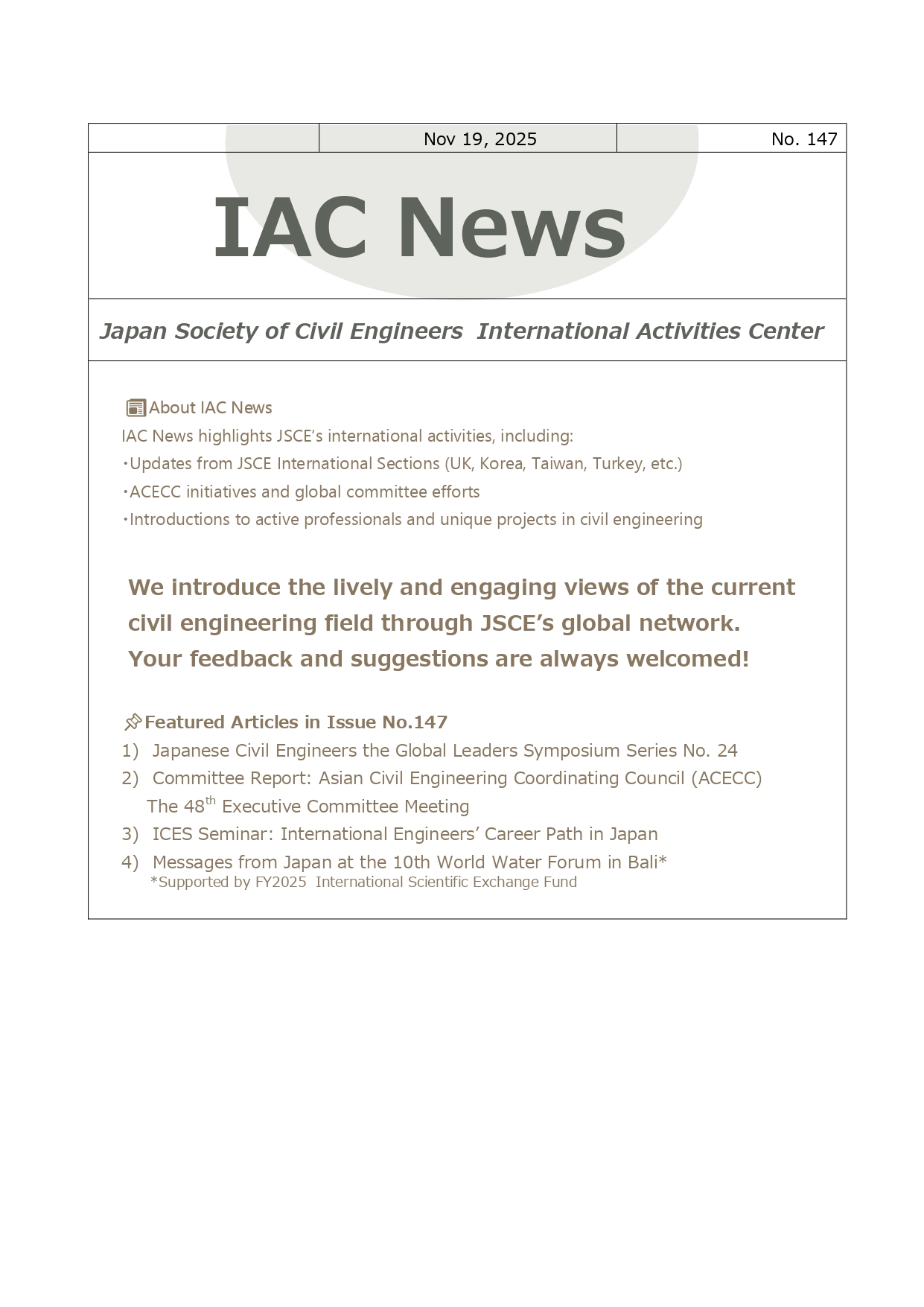Magazine Vol.98 No.3 Mar. 2013
Latest Magazine
vol.98 No.3 Mar. 2013

No.3 2013
Feature Articles :Feature articles:Current topics on performance based designCurrent topics on performance based design
In Japan, a country frequently affected by earthquakes, the anti-seismic criteria have been repeatedly revised since the time it was first introduced by earthquake legislation after the Great Kanto earthquake occurred in 1923. In addition to earthquakes, other natural disasters including inundation damage due to storm surge in coastal areas, flood damage of rivers, roads and railways caused by heavy rains, and sediment damage have also frequently occurred in Japan. In such a harsh environment, in order to reasonably construct and maintain safe and secure infrastructure, starting with the transition of design method from conventional Specification Based Design to Performance Based Design (“PBD”), a variety of technical standards and categories of standards have been developed specifically, based on types of facilities like rivers, roads, railways, ports, and power transmission, or types of materials like soil, steel-concrete, while various research and development have been carried out and advanced technologies have been introduced.
On the other hand, the transition to “PBD” has been accelerated since it is required by the WTO/TBT Agreement ratified in 1995 that international standards should be used as the basis of domestic standards. In order to comply with international standards, comprehensive design codes have been formulated based on the concept of “PBD” in Japan, and revisions of various domestic standards under these comprehensive design codes have been carried out.
In this special issue, Performance Based Design is highlighted in order to clarify what is “PBD” which is the basic concept of comprehensive design codes, and what is expected by introducing “PBD”.
Two years from Great East Japan Earthquake
Two years have passed since the Great East Japan Earthquake. The JSCE magazine has reported various articles on the damages and restoration activities stemming from the disaster. Additionally, various proposals from member engineers have also been introduced to ensure the planning of safe societies recovering from major disasters.
In this article series, we will continue highlighting the activities of people who are actively engaged in the restoration of the affected area. This may help fellow civil engineers who are tackling the challenges of reconstructing infrastructure and rebuilding society in Tohoku area.
Include in the March issue is a panel discussion organized by the President and Vice-President of JSCE with Prof. Motoki Kazama of Tohoku University in order to think about the role of civil engineers in society. Two former presidents of JSCE contributed articles. Finally, a voice from the affected area is introduced.
≪Index≫
(02) Admiration of Civil Engineering Heritages by JSCE:Civil Engineering Heritage Sites
Selection:NAKAKOSAWA bridge -Trail of Heaven- High Above the Earth masonry arch dam
ISHIDA Naritoshi
(04) Feature articles:Current topics on performance based design
(06) Performance based design after the 2011 Great East Japan Earthquake
KAMEDA Hiroyuki, ISHIBASHI Tadayoshi,KUSAKABE Osamu, HONDA Riki
(12) Trend to Performance-based Design ~Background and Hopes~
SATO Naotsugu
(16) JSCE’s Challenge to Performance-based Design
FUJITA Munehisa
(18) Development of a performance based design code at Japanese Geotechnical Society (JGS):Geocode 21
HONJO Yusuke
(20) Peformance-based Design of Buildings
SHIOHARA Hitoshi
(24) Before and after the revision of technical standards for port and harbour facilities
NAGAO Takashi
(26) Performance-based design of railway structure
TSUKISHIMA Daisuke
(28) Present performance-based norms and the future of Japanese Specifications for Highways Bridges
TAMAKOSHI Takashi
(30) International standard of seismic actions and future directions of performance based design after the 2011 East Japan Great Earthquake
IAI Susumu
(34) Further Study
(36) Working abroad:The biggest and most complex roading project in New Zealand
TAMAI Akio
(38) My life as Civil Engineer:Vol.3 The asset management of the bridge in Osaka city,
Japan(Project Introduction), Unveiling features of maintenance of a bridge
MIYAKE Shota, AIZAWA Takatoshi
(40) Student's report Iwaki Coal Week Report
(42) Committee report Committee on Environmental Systems
HARASAWA Hideo
(46) Studying Abroad The experience at construction of new bridge in Singapore:Foreign Trainee Systems for Young Civil Engineers
SAITO Manabu
(47) Book review
(48) JSCE member's report An educational symposium "HACHIKIN" for the woman engaged in civil engineering
MIKI Maya
(50) Reviewing January issue
(52) Feature articles 2:Two years from Great East Japan Earthquake
(53) Past and future activities of JSCE on Great East Japan Earthquake
ONO Takehiko, IEDA Hitoshi, KAZAMA Motoki
(58) Lessons learned from The Great East Japan Earthquake
SAKATA Kenji
(60) Engineering ethic and endeavor for the establishment of safe society
YAMAMOTO Takuro
(62) Seawall planning by Kesennuma citizens ―The public meeting for studying seawalls in
Kesennuma city―
TAKAHASHI Masaki, SUGAWARA Akihiko
(66) Adviser's column
(68) Pick-and-Choose Updates
(75) JSCE Updates
(94) New books
(96) New Paper on J-STAGE
(98) JSCE Calendar
(102) This Issue's Contributors
(102) Next Issue
≪Back Number≫

